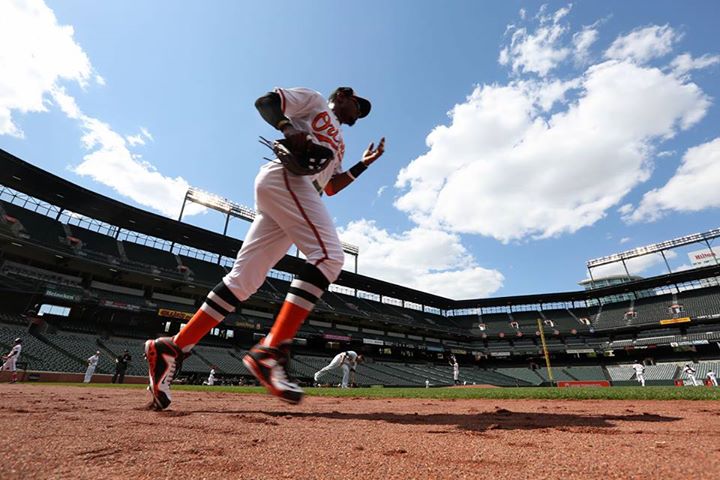Last week, saw a first for Major League Baseball and to my knowledge, major league sports in the U.S. The Baltimore Orioles played host to the Chicago White Sox at Camden Yards in front of a record crowd of zero fans due to the protests and rioting over Freddie Gray’s tragic death. As I read the articles online and watched the reports on TV, the stadium manager in me sparked what seemed like an endless list of questions.
I first want to admit that I’m not reporting on what actually took place between the City of Baltimore, the Orioles, and Camden Yards. The point of my post today is to use this scenario as a case study to start generating awareness of what you would do if this happened in your city and not to critique the execution of plans at Camden Yards. I’d encourage feedback from the community to help get the rest of us thinking.
Let’s start with the timeline of events. On Wednesday, the team met with local police and officials to determine the game that evening could not be played. Messaging was sent out for ticket holders via social media (and I’m guessing email) to retain their tickets and parking until more information is available. The same message was sent out regarding the game on Thursday, followed by a press release stating that Friday’s game would be played at 2:05 p.m. and be closed to the public. With a series of messages like these being picked up and reported by every national media agency, I tried to put myself in the shoes of the stadium manager at Camden Yards. Here are some the questions that came to my mind:
- Does the Sports Information Director (SID)/Communications Department have all the information to report out to the media to control the messaging? We don’t want them reporting on items that aren’t true.
- Do we have enough staff here to answer the phones, and have we armed them with consistent messaging to give to our customers?
- Can we put our security staff on 12-hour shifts to secure the ball park? Keeping in mind that some staff may rely on public transportation, and there is a 10 p.m. curfew.
- What kind of resources will we be able to get from local law enforcement, and is there a possibility that they’ll leave their post if something were to happen elsewhere?
- Who are the essential staff that need to be at the ballpark to effectively manage a game played in front of empty seats, and possibly, a very full press box?
- Should we staff the full complement of external ballpark positions to be prepared for guests arriving for the game?
I then began to ask myself, are these questions answered in my emergency operations plan (EOP)? While I know our EOP’s cannot speak to every incident that may occur, these are real questions that I better be able to answer. After going back through my EOP, I realized that they aren’t answered but it generated a whole new set of questions based on what was in there.
- If something were to happen in the stadium while the 2:05 p.m. game was going on (in front of limited media, scouts, etc.), would we have enough staff in the building to properly manage an emergency situation?
- Would we have set-up Incident Command (part of the ICS structure) in advance to be prepared?
- Have we done enough up until this point to train the staff on how to handle items like talking to the press, being observant of suspicious packages, and what to do if you answer the phone to a bomb threat? All items that are possible when your event is under a microscope.
It turns out that the game in Baltimore went off, and there were no major incidents reported. There were some great interviews by the players on their experience. Great job to Camden Yards and the Baltimore Orioles organization for managing the threat and still being able to host the game.
Once the game was over, I did wonder if there were opportunities to reward the essential staff that were able to make it to work. Not saying that Baltimore didn’t do any of these things, but I had some thoughts on what I would do if faced with these issues. Who knows, it could be relevant to other scenarios.
- Could there have been a special autograph session after the game for the essential staff? I can’t imagine it would have taken any more than an hour, understanding that the team wanted to get back to their families during this time of turmoil.
- Should we make a commemorative t-shirt to give them once things get back to normal? I can see it now, a shirt that reads, “I worked the only game in history played in front of a crowd of zero.”
- Host a thank-you dinner where senior level leaders thank the team for its commitment.
It never seems like there are enough opportunities to thank your staff, and it really makes an impact when events like these take place.
As stated above, the intent of this post was not to play “Monday Morning Quarterback” and criticize Camden Yards. It was merely to get you thinking on what you would have done so you are prepared if it ever happens in your city. I hope that all of you look at what Camden Yards went through and ask yourself what you would do if the roles were reversed. I know I’m taking this as an opportunity during my off season to review my Emergency Operations Plan, make updates, and reinforce them to the staff in training. What will you be doing?
(Image: Baltimore Orioles’ Facebook page)


Pingback: Erik Waldman Featured in IAVM Industry Blog | Catalyst
Thought provoking article, Erik. These are definitely items to consider as we continue to work toward emergency preparedness excellence. Thank you. -Q